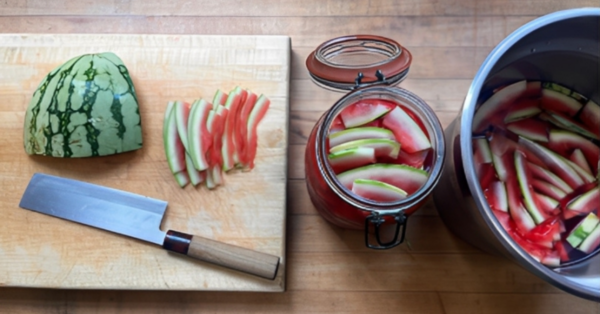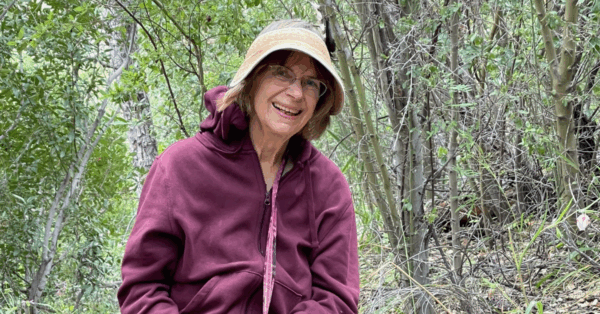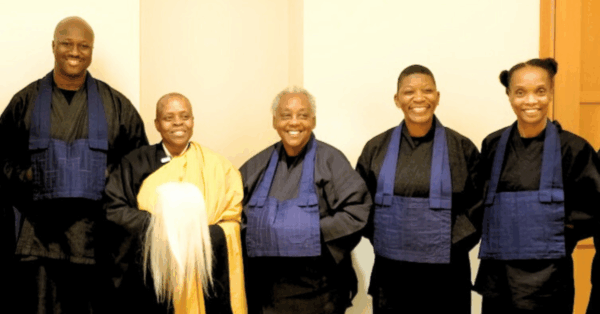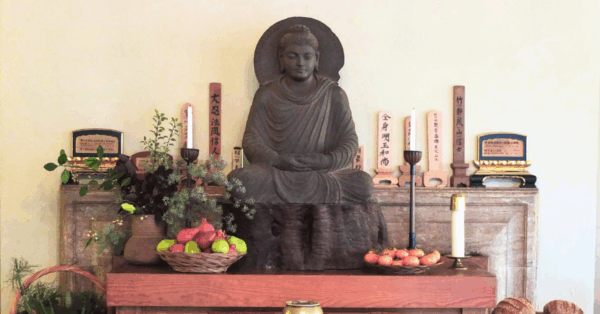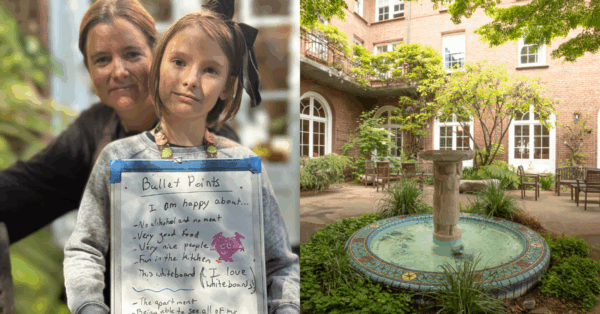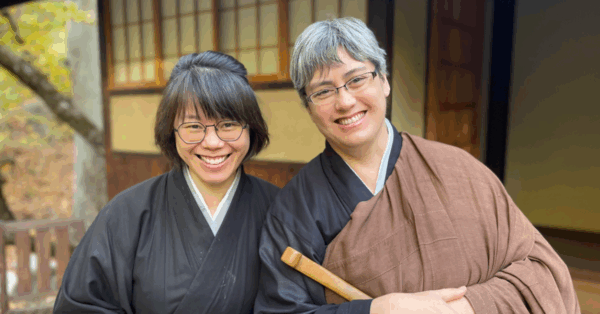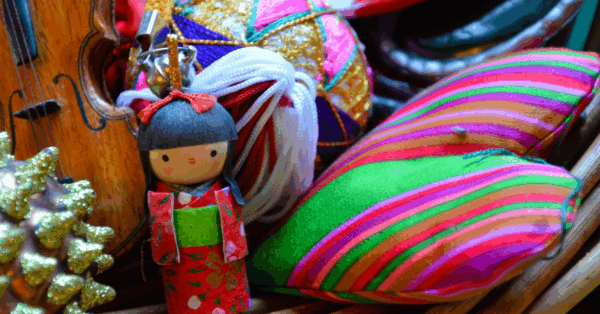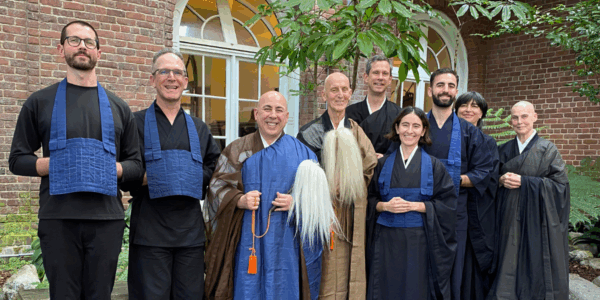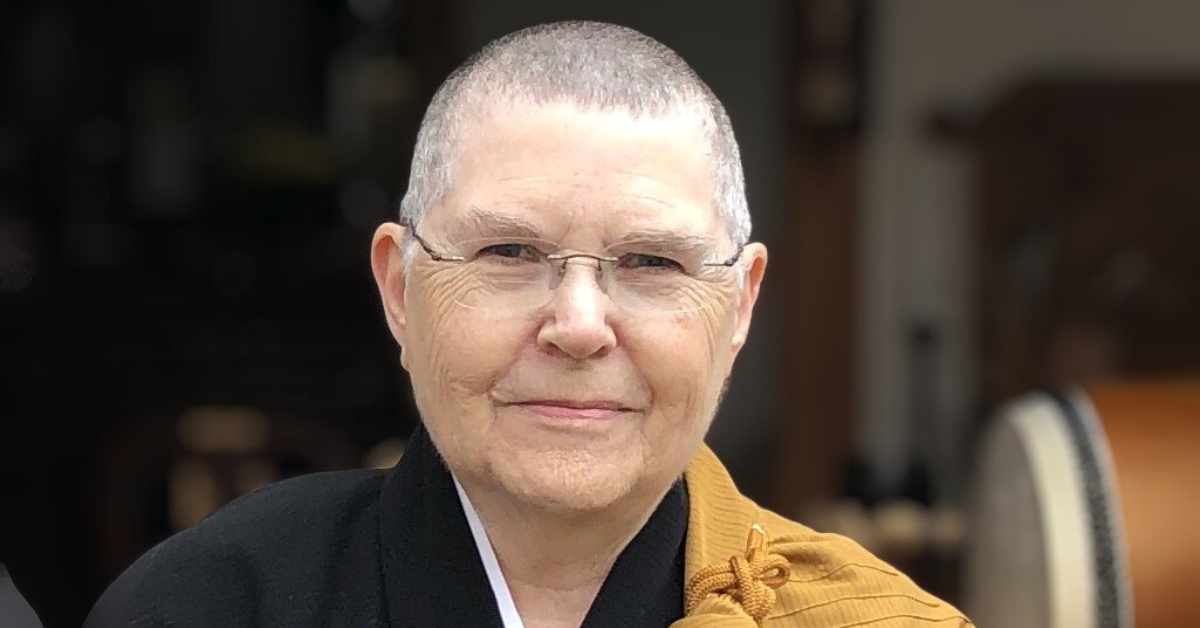
By Tova Green
Shinshu Roberts, a Dharma Heir of Sujun Mel Weitsman, received her priest training at San Francisco Zen Center and from the North American branch of the Japanese Soto School. Her latest book, Meeting the Myriad Things: A Zen Practitioner’s Guide to Dogen’s Genjo Koan, is a new commentary on one of Dogen’s most popular essays from the Shōbōgenzō. Shinshu sees it as an invitation to learn how to study Dogen: “I’m trying to help people who may be attracted to this practice,” she notes.
Shinshu Roberts cofounded Ocean Gate Zen Center in Capitola, CA, with her spouse Jaku Kinst.
In 2020, Shinshu’s students requested that she teach Genjo Koan, which required that she go back to the text. “The beauty of teaching is that we must study what we teach and figure out how to present the material in a way that is helpful for students.” In preparing for the class, Shinshu says, “I read every commentary I could, then shared my own ideas. I had over fifty pages of notes by the time I taught the class.”
In addition, Shinshu had a copy of Shohaku Okumura’s translation of a medieval Japanese commentary on Genjo Koan by two of Dogen’s students, Zen masters Senne and Kyogo. “To be able to read a commentary by two of Dogen’s students is an amazing gift to us—a rare opportunity for English readers to access the thoughts of practitioners who experienced Dogen’s teachings directly.”
When Shinshu asked Okumura Roshi if she could add the commentary to her book, he gave his consent but asked that more editing on the commentary be done. Shinshu asked the late Zuiko Redding, the founder and teacher at Cedar Rapids Zen Center, who could read Medieval Japanese, to edit the text as well as write a preface explaining the importance of Senne and Kyogo’s commentary.
Because there were already several commentaries on the Genjo Koan in English, Shinshu commented, “At first I questioned myself—who wants to read another commentary on Genjo Koan? Yet I had some ideas and I wanted to contribute to the conversation. In particular, I felt that as an American Zen teacher and practitioner, my own practice and life experience might be different from that of other commentators.
“I try to understand Dogen’s way of seeing things. The translation between Japanese and English is difficult—there’s more ambiguity in Japanese. For example, in Japanese, pronouns and plural forms may be more ambiguous than English, which tends to be more binary.”
Shinshu wanted to include what Senne and Kogyu said in their commentaries, especially when it helped to clarify ambiguous passages. She noted, “The end notes in this book are important, as I comment on what I did in the text.”
In Meeting the Myriad Things, Shinshu often quotes other parts of the Shobogenzo that clarify Dogen’s teaching in the Genjo Koan. “One reason [for doing this] is that there’s so much Dogen wrote that most students haven’t read, and I wanted to expose the reader to more of Dogen’s voice. Another reason is because Dogen often clarifies or amplifies an idea in another section of Shobogenzo. For example, he wrote in Being-Time about the radiance (Komyo) of our day. Later in Shobogenzo, we find he wrote a whole essay on Komyo. So in this case, we can find out a lot more about his ideas on the subject.”
Shinshu feels that Dogen Zenji’s teachings are as relevant to us as they were to his students. “I want Dogen to be alive for people. We’re all confused and deluded, just like people in Dogen’s time. What Dogen had to say about practice is true for us today. We, too, get caught in wanting to somehow transcend our life and think this is the way to realization. We create fantasies about what enlightenment is and thereby remove ourselves from the possibility of experiencing it. This is why Dogen wrote in Only a Buddha and a Buddha, ‘Realization inevitably differs from your expectation. Realization is not like our conception of it.’ And in Birth and Death, ‘To seek Buddha apart from birth-and-death is like pointing a cart northward when you want to go south . . .’” Shinshu remarks, “Don’t we today fall into the same trap?”
Shinshu emphasizes the importance of finding a teacher: “Because we are all prone to misunderstandings about practice, Dogen encourages us to study with a teacher. A teacher can help us engage with our own lives as our practice. For example, we have to give up our ideas of who we are, and we are resistant to that, and we may have misconceptions about what that might look like. Our teacher can support us as we navigate the relationship between the Dharma and how we actualize it in our daily life.”
At the end of our discussion, Shinshu observed, “Because we are Buddha nature, the suchness of reality is altruistic. Life is one continuous practice which ultimately supports life. As Dogen might say, ‘Life is life-ing life.’ This is also true in practice. ‘Practice-realization practice-realizes practice-realization.’ Buddha nature motivates us to practice…it’s self-perpetuating. We aspire to practice motivated by our inherent inter-connection with the altruistic nature of suchness. And the more we do this, the more we are motivated to continue. This altruism of practice perpetuates itself, bringing more energy, and in this way nourishes itself.”
On September 13 at City Center, Shinshu will offer a Dharma talk and book signing at 10:00 am and a workshop, Genjo Koan: Meeting the Myriad Things, from 1:00–4:00 pm.


